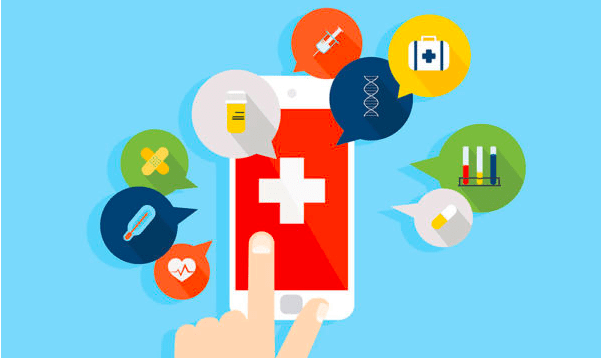Accessible healthcare empowers individuals with disabilities to take charge of their health and well-being like never before. By leveraging digital tools, healthcare providers can bridge the gap between patients with disabilities and the vital care they need.
The advent of digital tools has significantly enhanced accessibility in healthcare. These tools revolutionize healthcare delivery, improving convenience, efficiency, and patient-focused
Technology makes accessible healthcare a tangible reality, improving the lives of individuals with disabilities and other barriers to care.
In this article, we will explore the remarkable advances in digital tools that are driving accessible healthcare forward. We will examine how these tools are reshaping communication between patients and healthcare providers
Technological Advancements in Accessible Healthcare
Advancements in technology enable the use of digital tools in healthcare, enhancing patient care, communication, and remote monitoring. High-speed Internet, mobile devices, wearable sensors enhance patient care, improve communication, and enable remote monitoring.
Increasing Connectivity and Internet Penetration
The widespread availability of high-speed Internet and the increasing connectivity of devices have created opportunities for digital tools in healthcare. Increasing internet access enables healthcare providers to use digital platforms for remote care, telehealth consultations, and secure medical information exchange.
Changing Patient Expectations and Demographics
Patients today have higher expectations regarding convenience, accessibility, and personalized care. They seek healthcare services that align with their lifestyle and preferences. Telehealth, mobile apps, and wearable devices enable remote access to healthcare services, self-care, and real-time health monitoring.
Policy and Regulatory Changes to make healthcare accessible
Governments and healthcare regulators see how digital tools can improve healthcare. They made policies to support their use, like reimbursing telehealth and making rules for digital health technologies. They also made standards for electronic health records to make it easier to share information. These policies create an environment where digital tools can be used in healthcare.
Healthcare System Challenges and Resource Constraints
Healthcare systems worldwide face rising healthcare costs, an ageing population, and an increasing burden of chronic diseases. Digital tools offer solutions to address these challenges by improving efficiency, reducing costs, and empowering patients to manage their health. For example, remote monitoring tools can help manage chronic conditions and prevent hospital readmissions, reducing the strain on healthcare resources.
Research and Evidence Supporting Digital Health
Research showing that digital health tools work has helped make them more popular. Studies have shown that telehealth, mobile apps, remote monitoring, and AI-driven technologies can help improve healthcare. This has made healthcare providers, payers, and patients more confident in using these tools in regular care.
COVID-19 Pandemic
The COVID-19 pandemic has been a driving force towards the extensive use of digital technologies in the healthcare industry. With telehealth, patients can have virtual appointments to talk about their health, get diagnosed, and seek expert advice from home. Going to a hospital or clinic can be hard for people with limited mobility or transportation.
Digital Tools in Accessible Healthcare
Telehealth and Virtual Consultations
Telehealth and virtual consultations have emerged as game-changers in the quest for accessible healthcare. These innovative digital tools enable patients to connect with healthcare professionals remotely, breaking down barriers of distance, mobility, and time. With telehealth, individuals with disabilities and those living in remote areas gain unprecedented access to quality healthcare services.
Telehealth enables patients to have virtual consultations, avoiding the need to travel to healthcare facilities. This is beneficial for individuals with limited mobility or transportation options. Since they can discuss medical concerns, receive diagnoses, and seek expert advice from the comfort of their homes.
Additionally, virtual consultations offer flexible scheduling, accommodating patients’ diverse needs and reducing wait times.
Telehealth also facilitates collaborative care by enabling healthcare providers to share medical records, test results, and imaging studies electronically. This seamless exchange of information ensures that patients receive comprehensive and coordinated care, regardless of their geographical location. It promotes timely diagnosis and treatment, leading to better health outcomes.
Mobile Applications for Personal Health Management
Mobile applications have emerged as powerful tools for personal health management, promoting accessible healthcare for individuals of all abilities. These innovative apps enable users to actively monitor and manage their health from the convenience of their smartphones or tablets.
Accessible healthcare is at the forefront of mobile health applications. These apps provide users with a range of features and functionalities that cater to diverse needs. From medication reminders to symptom tracking mobile apps empower individuals to take control of their well-being.
With user-friendly interfaces and customizable settings, these apps can be tailored to accommodate specific accessibility requirements. Text-to-speech and voice recognition ensure that individuals with visual impairments can navigate and access vital health information effortlessly.
Furthermore, mobile apps facilitate seamless communication between patients and healthcare providers. Users can securely share their health data, such as vital signs, or sleep patterns, with their healthcare team. Thereby enabling remote monitoring and timely interventions. This real-time exchange of information enhances care coordination and promotes proactive healthcare management.
Assistive Technologies for Communication
Communication barriers often hinder effective healthcare interactions for individuals with disabilities. Digital tools offer innovative solutions to bridge this gap and ensure comprehensive communication between patients and healthcare providers.
People who have trouble speaking can use special technology called augmented and alternative communication (AAC). One example is voice-generating apps that help them express their healthcare needs. These tools can be connected to healthcare systems, making it easy to share information and coordinate care. This helps healthcare professionals understand and meet patients’ needs accurately.
Electronic Health Records (EHRs) and Accessible Healthcare
Electronic Health Records (EHRs) are a central repository for patients’ medical information. Digital tools can enhance EHR accessibility for patients with disabilities, ensuring their active involvement in their care. EHR systems should be designed with inclusive features, such as text-to-speech capabilities, adjustable font sizes, and compatibility with screen readers.
Additionally, incorporating visual cues, color contrast, and intuitive navigation can improve the usability of individuals with visual impairments. Accessible EHRs accessible help patients review and share their medical records independently. Thereby enabling them to participate in decision-making processes actively.
Remote Monitoring and Wearable Devices
Remote monitoring and wearable devices enable healthcare providers to monitor patients’ health parameters in real-time. Patients need not visit healthcare facilities frequently. These devices can particularly benefit individuals with mobility impairments or chronic conditions.
Virtual Reality (VR) and Rehabilitation
Digital tools like virtual reality (VR) have shown promise in transforming the rehabilitation process for patients with disabilities.
VR-based rehabilitation programs are customizable for conditions like stroke recovery delivering personalized and effective rehabilitation.
Artificial Intelligence (AI) for Assistive Solutions
Artificial intelligence (AI) has the potential to revolutionize assistive solutions for individuals with disabilities, making healthcare more accessible and efficient. AI-powered technologies can analyze data and patterns to provide personalized recommendations.
Accessibility Standards and Design Guidelines
To ensure the effective implementation of digital tools in healthcare, it is crucial to establish accessibility standards and design guidelines. These guidelines should encompass various disabilities, including visual, hearing, motor, and cognitive impairments, to ensure comprehensive accessibility.
Training and Education for Healthcare Professionals
As digital tools become increasingly integrated into healthcare, it is essential to provide training and education to healthcare professionals. They must learn to utilize these technologies when treating patients with disabilities effectively. Training programs should focus on the functionalities and accessibility features of digital tools for patients benefit.
Overcoming Technological Barriers
It is essential to address the potential barriers that may hinder its widespread adoption and effectiveness. Overcoming these technological challenges is crucial to ensure that everyone, regardless of their abilities, can benefit from accessible healthcare.
One significant barrier is the availability and affordability of assistive technologies. Many individuals with disabilities rely on specialized devices or software to access digital platforms. Ensuring that these assistive technologies are widely accessible and affordable is essential to promote inclusivity in healthcare. Additionally, developers and designers should prioritize incorporating accessibility features into healthcare technologies.
Healthcare providers and professionals should receive adequate training and support to effectively utilize digital tools for accessible healthcare. By proactively addressing these technological barriers, we can foster accessible healthcare to all.
Conclusion
Digital tools can revolutionize accessible healthcare for individuals with disabilities. Telehealth, mobile applications, assistive technologies present tremendous opportunities for overcoming barriers. They will empower patients with disabilities to engage in their healthcare actively.
However, it is crucial to prioritize training for healthcare professionals to ensure these digital tools benefit all individuals with disabilities. Digital tolls make the future healthcare system more accessible, inclusive, and patient-centered.









